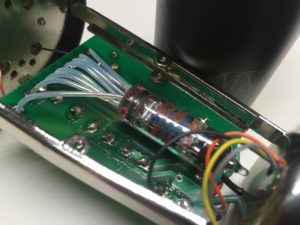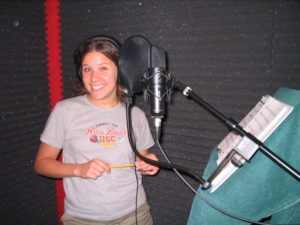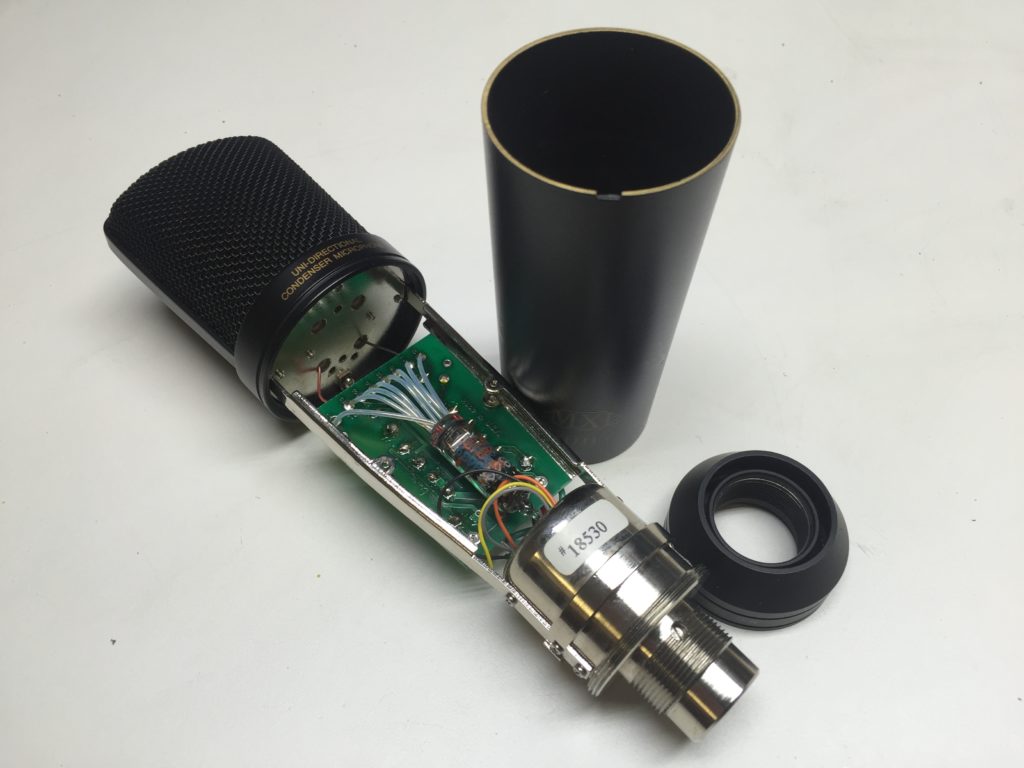I had my first experience with soldering and do-it-yourself electronics when I was 9 years old.
It did not end well.
In those days, my older brother and I had a family friend, Scott, who was really into electronics. I’m not sure if I would have called him a “hacker”, but let’s just say he had a real knack, around age 12, for making use of technology in ways that 12 year old boys would find useful.
Visiting Scott’s house, we got to experience all sorts of bells and whistles (literally, in this case) that he’d put together and strapped to the wall of his room to keep his younger sister, Amy, from bugging him or messing with his stuff. As I recall, there was some kind of a proximity sensor that detected movement and set off an alarm when someone walked into the room. There was a sensor tied into the door latch that would detect when the door was opened and, yes, set off another alarm. I also vaguely seem to recall he’d picked up a keypad and was in the process of wiring up some sort of a combination lock he was planning to mount in the hallway so he could disable the alarms himself without setting them off.
So you have to imagine Scott’s poor sister wandering into his room for some seemingly small reason and being treated to a cacophony of alarms and flashing lights. More irritation than deterrence, I think, but you had to give him credit for being creative…for applying technology to solve a problem. It seems like the 12 year old boy’s mind is at its most creative when dealing with bratty kid sisters.
It seems like the 12 year old boy’s mind is at its most creative when dealing with bratty kid sisters.
In any case, my brother and I kept marveling at all the electronic wizardry that Scott seemed to have mastered. He never let on whether he actually knew WHY all this stuff worked (voltage, current, resistance, and so on), but he was very clear about HOW he was putting it all together: he had some sort of mail-order catalog where he could order all these electronics kits. The design-ifying, circuit-ifying and electric-ifying had been done for you. All you had to do was whip out the soldering iron and put the kit together. Presto. Instant Kid Sister Deterrent®. It all seemed so easy.
This being the era before the internet, we never did figure out how to get our hands on whatever this catalog was that Scott was ordering these kits from. But we did have a Radio Shack nearby that was within easy bike-riding range. My brother and I spent plenty of time in those years convincing the staff that our family was “considering a purchase” of one of the fine Radio Shack TRS-80 computers on display, just so we could sit there all day playing games. This is what you had to resort to when when your parents wouldn’t buy you an Atari.
Anyhow, at some point, we discovered that Radio Shack sold those little educational kits where you could build some sort of working piece of gear in order to learn the basics of electronics. One of these kits was the famous “Digital Dice” kit. This was a small, critically important, labor-saving device that spared you the grueling effort of rolling a pair of physical, analog dice. Instead, you merely pressed a button and — voilà! The result of the roll was displayed as a series of LEDs arranged in a dice-like array on a circuit board. Velleman and others still make these kits today.

Radio Shack’s offerings were nothing like what Scott was building, but it seemed like a start. Before too long, my brother and I bought a dice kit, a cheap soldering iron, and, this being the early 80s, some good old-fashioned tin-lead alloy solder (I still use leaded solder today, but let’s just say I’m a lot more careful about not putting my fingers in my mouth when I’ve been working with it.)
I think the problem with those “educational electronics kits” is that they tended to be long on “what” and very, very short on “how,” especially on simply how to solder. They’d tell you what this or that part was, and what it did, maybe including some math or some funny symbols that meant absolutely nothing to us as middle schoolers. But the assumption always seemed to be that you already had some basic idea of how to handle a soldering iron.
So we didn’t really know what we didn’t know. We just figured the soldering iron was like a super-hot paint brush: melt a huge glob of solder onto the tip of the iron (all the while breathing in that funny-smelling smoke, because we didn’t know any better), then attempt to brush the solder, like paint, onto the part you’re working on. It was really hard transferring the solder to the part, for some reason… Oh well, add more solder to the iron and keep brushing it on there, until enough of it sticks to hold the part in place. That oughtta do it.
Now, if you have even a basic understanding of how to solder, you of course can see right away that we had no idea what the hell we were doing. To this day I still have a scar on the back of my thumb from where hot solder dripped off the iron onto my hand (when done correctly on typical electronics work, you’re not using anywhere near enough solder for it to drip off the iron). Suffice it to say that the Digital Dice project died in a pathetic pile of melted, overheated parts, lifted solder pads, and a flux-stained, burned circuit board. With it, too, died any aspirations I might have had to pursue the kind of electronic wizardry our friend Scott had mastered.
We just figured the soldering iron was like a super-hot paint brush: melt a huge glob of solder onto the tip of the iron, then attempt to brush the solder, like paint, onto the part you’re working on.
To this day I still have a scar from where hot solder dripped off the iron onto my hand.
I never lost interest in electronics, but I also never gave much thought to the idea that I might build something someday.
Fast forward 23 years later.
It’s 2003, Ann and I are married, and we are fully plugged in to the revolution in home recording that was then currently underway. We were the proud owners of a pair of AKG C3000 condenser mics (about $300 each) that we’d purchased to record the first News At Eleven album in 1999, but that was really the full extent of our “mic locker”. Like any unrepentant gear hound, though, I was always on the prowl for the next cool thing for our little closet studio.
One day, I came across a thread on GearSlutz that made mention of some sort of really cool vacuum tube mic mod created by David Royer (of Royer Labs fame). Royer Labs makes ribbon microphones, a delicate, “vintage” technology that dates back to the earliest days of recorded sound, but which has come to be prized for its smooth, warm character on brass instruments, cymbals, drum overheads, certain types of voices, and other sources that benefit from a darker, mellower character at the top of the frequency spectrum. I think it’s fair to say that David is one of the two people in the audio industry today (the other being Wes Dooley of AEA) most responsible for the resurgence of ribbon microphones on stage and in the recording studio.
Royer Labs’ products are cool, and sound amazing, but they tend to be on the spectacular side of expensive. Just as an example, the Royer SF-24 stereo ribbon mic that we use for drum overheads here at ULS, which we bought used, retails for over $4,000 when purchased new. I heard a story somewhere (I think from one of David’s colleagues at Mojave Audio, but don’t quote me on that) about how someone came up to David at an audio conference one day and complained that Royer Labs made all these amazing microphones that were priced out of reach of most individual users. This person wanted to know: “when are you going to make something that mere mortals can afford?”

David, as the story was told to me, took that to heart. In 2001 he published a watershed article in Tape Op magazine that sought to de-mystify the circuitry of the legendary Neumann U47 tube microphone. Vintage U47s sell for huge money even today, nearly seventy years after the mic was first introduced in 1947. Royer’s article sought to show how one might, with some soldering and a kit of upgraded parts, modify a cheap (but reasonably sturdy) microphone, the $99 MXL 2001, into something that could at least resemble the sound and character of a U47. As an added bonus of “mojo,” David Royer’s kit called for a tube power supply constructed out of a funky, surplus army ammo box. Firepower, indeed! Royer started a sister company, Mojave Audio, to begin marketing these DIY kits.
I was intrigued. Make a $99 mic sound like a U47? Build the power supply in an ammunition box? How thrifty. How awesome. It’s like a “Frankenmic.” I totally wanted to build one.
Just one problem. I hadn’t picked up a soldering iron in 23 years.
I think the kit was about $300-350. An expensive experiment, but not outrageous, especially if what people were saying about the modded microphone was true. So I decided to be bold…I bought an MXL2001 for $99 at Guitar Center, then sent away for the kit.
Make a $99 mic sound like a U47? Build the power supply in an ammunition box? How thrifty. How awesome.
It’s like a “Frankenmic.” I totally wanted to build one.
When it arrived, I realized that this project involved actual, honest-to-God 120 volts of household A/C. The kind that can kill you. It involved an actual, honest-to-God vacuum tube and its power supply, which includes some beefy capacitors that carry enough of a charge that they, too, can kill you, even if you’ve unplugged the power supply from the wall.
I’m bold, but I’m not stupid. And I’m not Ben Franklin when it comes to high voltage. The kit sat in a drawer while I tried to figure out how I might learn enough to put it together safely, without shocking myself or burning the house down.
A while later, it occurred to me that a friend of ours from our music group at church, Bob Masleid, was an electrical engineer. We’d been to his house many times, and seen the incredible model railroad display he kept in his garage, including an impressive pulley system that allowed him to raise the entire rig to the ceiling of the garage, in perfect level position, when he needed to pull his car in. I also knew that any time a cable at church had a problem, Bob would coil it up and take it home with him, only to bring it back the following week, with the cable maybe a couple of inches shorter, possibly sporting a new connector, but otherwise in perfect working order. Bob must know a thing or two about soldering, right? I wondered if he’d be willing, not to build my kit for me, but to sorta show me the ropes of how to solder properly, then watch over my shoulder to make sure I wasn’t doing anything stupid. It seemed like the only way I could be reasonably sure that I could build this kit without too much danger to life or limb.
I broached the subject with Bob, fully expecting him to turn me down. Bob is a first-rate electrical engineer but not really an “audio guy”. Still, I could see he was intrigued. He loves to tinker and really enjoyed the “pirate radio” idea of turning a cheapie microphone into something resembling a classic, especially when it involved something so esoteric and seemingly obsolete as a vacuum tube. He agreed to help me. Over the course of three or four Wednesday nights over a month in March 2004, we’d meet at the electronics bench in his garage, and he’d supervise me as I built the “Frankenmic” with his electronics tools.
The funny thing about this kit, and the thing I was totally not expecting, was the way in which the vacuum tube was mounted to the microphone’s circuit board. I was used to the big tube sockets like you’d see in the back of an old TV set or radio. Those tubes just have rigid pins on the bottom, which are seated squarely in a ceramic socket on the PC board. That kind of an arrangement allows you to easily replace defective tubes without having to mess around with solder.

This kit, though, used a miniature tube, which, rather than fitting into some sort of socket, just hangs off the circuit board by a series of metal lead wires. Apparently this is not an unusual thing when you’re dealing with miniature tubes, but I’d never seen it before. It gave the project even more of a “look what they managed to cram in this tiny space” kind of feel.
Perfect for a “Frankenmic.”
When the kit was finished, Ann and I immediately put it to work recording the second News At Eleven album, Here Till The End. In the years that followed, that microphone was used on literally thousands of our recordings, ranging from voiceovers, to ADR, to singers of all stripes and abilities, to instruments as varied as acoustic guitar and cello. Does it sound like a U47? I’ve never had access to a real one, so I can’t say for sure. But I’d be hard pressed to say that the mic sounded bad on anything. No matter what you pointed it at, the sound was flattering but unhyped, honest but not uncomfortably so. It was a key part of Ann’s signal chain for her voiceover work, too. She tried four or five different microphones over the years, but always came back to the Frankenmic.

A few years after I bought this kit, Mojave Audio transitioned into a “real” microphone company, selling manufactured versions of David Royer’s non-ribbon designs. At that time, sadly, they discontinued the MXL2001 mod kits, so you while you can still buy an MXL2001, the circuit boards for these kits are no longer available. Fortunately, though, Mojave introduced the MA-200, which is essentially the same vacuum tube circuit design as his MXL2001 mod kit in a sturdy, purpose-built microphone.
Does it sound like a U47? I’ve never had access to a real one, so I can’t say for sure. But I’d be hard pressed to say that the mic sounded bad on anything.
Tragically, my ammo box power supply met an untimely death last year when it was left sitting on the floor and took on water in a flood. Since the kits are no longer available, we went ahead and picked up a Mojave MA-200 just to make sure Ann could still have the sound of the Frankenmic for her voiceover work. The mic itself is fine, so I have been in touch with David Royer about how to go about rebuilding the power supply. It’s too good of a mic to just put it out to pasture.
Whether I can resurrect the Frankenmic or not, the biggest legacy of this project is that I learned how to solder properly. I have Bob Masleid to thank for that, so I make a point of jokingly blaming him every time a new project arrives on my electronics workbench. That skill has served me very, very well since then. I have saved literally tens of thousands of dollars in gear and labor costs by being able to do my own soldering. It has opened up all sorts of DIY doors for me, letting me take on projects and solve design problems that I would never have had the courage to try otherwise.
-M2
Share this:
- Click to email a link to a friend (Opens in new window) Email
- Click to share on X (Opens in new window) X
- Click to share on Facebook (Opens in new window) Facebook
- Click to share on LinkedIn (Opens in new window) LinkedIn
- Click to share on Pinterest (Opens in new window) Pinterest
- Click to print (Opens in new window) Print


